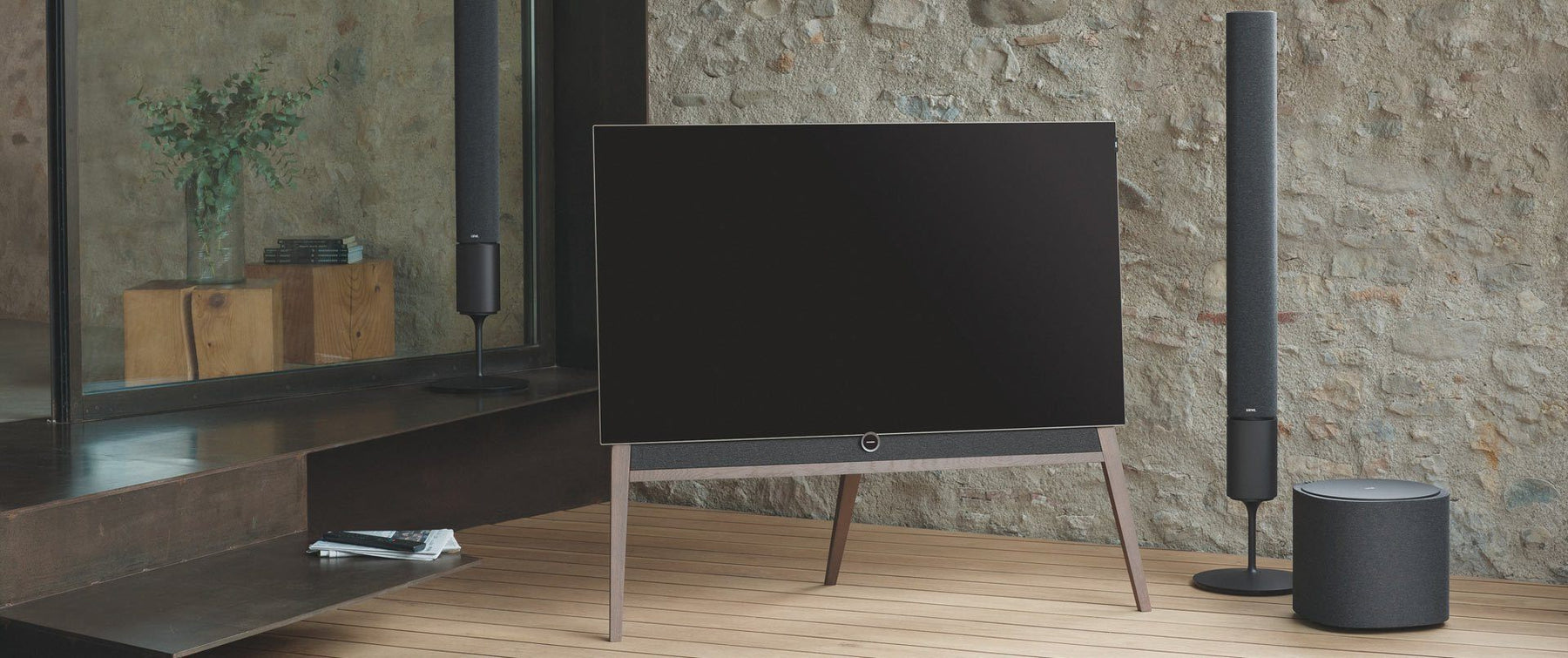
Complete Insider Guide to HDMI Cables: The Most Effective Ways To Use Them
Photo by Loewe Technologies on Unsplash
The days of analog are gone, and today, for high-definition (HD) sound and picture quality, you need an HD solution. If you're still using analog connections for your HD devices, you're losing quality in your viewing experience. For the best picture and sound, you need an HDMI cable.
But if you are unfamiliar with how an HDMI cable works and why you want to make the switch, you may decide to forego the upgrade. Take a moment to understand what an HDMI cable is, why (and when) you would use one, and how to integrate them into your high-definition audio/visual (AV) systems.
What is HDMI?
The term HDMI stands for "high-definition multimedia interface", and it is the most frequently used HD connection cable between HD-capable devices. You can use an HDMI cable both commercially and for residential AV systems.
HDMI specifications were first released in December 2002 and quickly became the industry standard for ultra-high-definition displays. AV applications are not the only use for an HDMI cable. Data transfer is another use for HDMI via the Ethernet Channel.
HDMI Specification 2.1 is the most current upgrade to this cable’s specs. It supports a much higher resolution and refresh rate, including 8K60 and 4K120, with resolutions up to 10K. Dynamic HDR formats are supported as well, and bandwidth has increased to 48Gbps.
What are the Different HDMI Connector Types?
Depending on what devices you are connecting, make sure to select the correct HDMI cable connector type. There are seven different types of connectors. Before you purchase the wrong one, check to see which connection the other end of the cable requires.
These are the different types of connector ends of an HDMI cable:
- Type A: These are the original cables developed for HDMI 1.0 capable devices with 19 pins and give enough bandwidth to connect most HD devices.
- Type B: The Type B connector is an upgrade with 29 pins that gives increased bandwidth for extremely high-resolution screens. This connector is slightly wider than Type A connectors but was never used in any products because it quickly became outdated with the release of the HDMI 1.3 spec.
- Type C - a.k.a "Mini HDMI": These cable connectors have 19 pins configured to fit within a smaller port space for portable high-definition HDMI 1.3 devices.
- Type D - a.k.a "Micro HDMI": This connector is specifically designed for smartphones, tablets, and some cameras, with 19 pins configured for an even smaller connection than Type A and C and made for HDMI 1.4 capable devices.
- Type E: HDMI cables with a Type E connector are for automotive applications with features that prevent disconnections caused by vibrations.
- Category 1: These cables are certified at 74.5 MHz and are often thought of as the standard HDMI cable because they function the same.
- Category 2: These cables are an upgrade from the Category 1 cable and certified to work at 340 MHz and are considered the best for high-speed requirements.
Many of these cables are interchangeable with the use of an HDMI adapter or converter. Verify that your HMDI cable provides the correct bandwidth for the multimedia systems you are connecting to ensure appropriate transfer speed.
3 Best Ways to Use an HDMI Cable
When most people think of HDMI cables, they think of home entertainment. That is just one of the uses for one of these cables. It is the versatility of an HDMI cable that makes it a popular choice for tech gurus and digital installation specialists. But you don’t have to be an IT professional to appreciate everything you can do with an HDMI cable.
1. Connecting a Home Theater System
If you are setting up a home theater system, HDMI will provide the best AV quality available. It will ensure that all of your displays are high resolution and that sound quality is unmatched. Speed of data transfer is another reason to use an HDMI cable in your home entertainment setup, especially if you are a customer of one or more of the most popular streaming services.
2. Arranging an Office or Workstation
Streaming services are not the only reason that you're going to pay close attention to the speed of data transfer of your HDMI cable. There are many practical applications for these cables at the office or your home workstation. Many people work from home these days. If you work remotely, you can set up your home office to meet the efficiency of your office at work with the implementation of HDMI technology.
3. Setting Up a Security System
It was in 1966 that Marie Van Brittan Brown invented the first home security system. Advancements in technology have improved tremendously in the nearly 60 years home-security has been a concern for home, land, and property owners. Security camera video feeds used to be at a relatively low resolution, but resolution on newer systems is increasing, sometimes accompanied by an HDMI output option.
What Can an HDMI Cable Connect?
The best part of an HDMI cable is the ease of use and the plug-and-go capabilities. You don’t need to be tech-savvy to know how to connect HDMI to your devices. But knowing how to select the correct cable for different applications is vital. Connector ends, speed of transfer, and device compatibility will be your focus when purchasing an HDMI cable.
You have evaluated the type of connectors and are familiar with the best ways to use an HDMI cable when setting up your home or office. Still, you may be curious which devices utilize HD technology. These are a few of the media devices you can connect with an HDMI cable:
- TVs, video projectors, and PC monitors
- Cable/satellite boxes and DVRs
- Home theater receivers
- DVD, Blu-ray, and Ultra HD players
- Game consoles
- Computers and laptops
- Media streamers
- Digital cameras, camcorders, and smartphones
HDMI technology continues to be the leader in digital audio, visual, and data interface connectivity. The home is not the only place that HDMI is useful. These specifications enable solutions within many industries including the military, healthcare, surveillance, aerospace, and industrial automation.
How Much Does the HDMI Cable Length Affect Signal Integrity?
A common question that tech experts get about an HDMI cable is whether the cable length affects picture and sound quality. Since HDMI is a digital signal. the actual picture quality is not affected by distance, but the reliability of the signal will degrade. This becomes more important when pushing the bandwidth limitations of the cable. A common symptom of signal degradation on a long run can be an intermittent picture or short blackouts every few minutes. And some times the picture will just not reach at all.
There are some high-quality HDMI cables designed to improve the signal integrity in lengths up to 50 feet. This is achieved by improved shielding to reduce Electromagnetic Interference, and thicker gauge. However It is recommended to not extend the distance beyond 30 feet without any sort of repeaters or boosters for the best results.
Fiber HDMI cables offer a solution for people who need to connect devices over a longer distance. These cables convert HDMI signals to optical signals at one end and back to HDMI at the other end. They are available in lengths up to 300 feet and can provide excellent signal quality over long distances, without any perceptible lag.
Does an HDMI Splitter Affect Audio and Visual Quality?
Splitters can be a great tool when there is a limit to the number of HDMI ports available on the device. Yet, many are concerned that this will cause a degradation in the signal, lowering the overall resolution and sound quality. A splitter works by copying transmitted digital signals, and sending a fresh copy of the signal on each output to the displays, which does not degrade. In fact, Since splitters require their own power supply, they also act as repeaters, so the integrity of the transfer remains the same. But this all depends on the quality of the splitter.
Some cheaper adapters and splitters will cause degradation simply because of low-quality production. It will do you no good to buy a high-quality cable only to degrade the signal with a poor-quality splitter or adapter. Make sure to pay close attention to who manufactured the digital display accessory.
Sewell Direct Knows What is Best in HDMI Cables
HDMI cables changed how you view your programs, stream movies or music, and how you transmit information digitally. The improvement in signal, sound, and picture quality was innovative when first developed, and technology continues to advance, providing an even better display experience.
As digital technology becomes "smarter," so does your need to connect these enhanced interfaces. Smartphones, tablets, automotive computer systems, televisions, laptops, and computers are all designed and developed to connect using HDMI. Your devices will work better together when you attach them with an HDMI cable.
Now that you are ready for the upgrade from analog to HDMI, you will want to ensure that you get the highest quality HD products. And you will need someone you can trust.
Our team has decades of experience in supplying software and hardware connectivity solutions. The latest in HDMI cable technology is at Sewell Direct. In 2003, Sewell Direct launched and began placing its focus on hardware solutions for networks, home theater, commercial cabling, and personal electronics.
At Sewell Direct, you can rest assured that we make the process of integrating HDMI as simple as possible. Whether you have a big project or are looking for a hard-to-find HDMI adapter or other components, we have the end-to-end solution for all your connectivity needs.
Does the sound and picture quality of your home entertainment system need an upgrade? Sewell Direct has the latest in HDMI cable technology. Shop our HDMI list for adapters, splitters, cables, and more.
